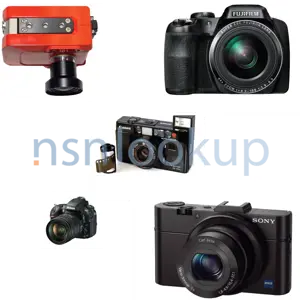Digital Camera System
Item Name Code (INC) 49843
 |
A device consisting of a CAMERA, STILL PICTURE and digital imaging equipment of various configurations designed to capture images directly into a storage unit with immediate availability for viewing or transmission.
 Additional Information for Digital Camera System
Additional Information for Digital Camera System
A digital camera system refers to a combination of hardware and software components that work together to capture, process, and store digital images. It is a type of camera that uses electronic sensors to capture and record images instead of traditional photographic film.
Digital camera systems typically consist of the following components:
1. Camera body: This is the main unit of the digital camera system, which houses the image sensor, processor, controls, and display screen. It is responsible for capturing the image and processing it.
2. Image sensor: The image sensor is a crucial component of a digital camera system. It converts the light that enters the camera into an electronic signal, which is then processed to create a digital image.
3. Lens: The lens is responsible for focusing the light onto the image sensor. It determines the quality and characteristics of the captured image, such as focal length, aperture, and zoom capabilities.
4. Memory card: Digital cameras use memory cards to store captured images. These cards come in various formats, such as SD, CF, or XQD, and provide the necessary storage capacity for saving multiple photos.
5. Battery: Digital cameras are powered by rechargeable batteries. The battery provides the necessary power to operate the camera and capture images.
6. Display screen: Most digital cameras have an LCD screen on the back, which allows users to preview and review the captured images. It also provides a user interface for accessing camera settings and menus.
7. Controls and settings: Digital cameras have various controls and settings that allow users to adjust parameters such as exposure, focus, white balance, ISO sensitivity, and shooting modes. These settings give users more control over the final image.
8. Connectivity options: Many digital cameras offer connectivity options such as USB, Wi-Fi, or Bluetooth, allowing users to transfer images to other devices or directly share them online.
Digital camera systems have revolutionized the field of photography by offering instant image preview, easy image manipulation, and the ability to store a large number of images in a compact device. They are widely used in various applications, including professional photography, amateur photography, videography, and surveillance.